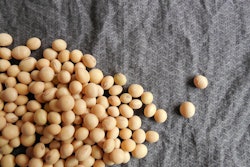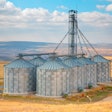Corn basis was unchanged on average this week but we again observed weakness along the upper Mississippi river system. Flooding remains a major problem for barge traffic and as a result grain buyers have been moving spot corn basis lower for the last two weeks. This week saw spot corn basis along the river down 2 cents, with many facilities backing off basis 5-10 cents. Corn has been most impacted by recent flooding, as corn shipments are making up the majority of grain shipments down river. Lock 27, north of St. Louis, reported that corn accounted for 93% of grain shipments down river for the week ending June 21st. With flood waters expected to crest late this week and into the weekend, river basis will have an opportunity to rebound as delays along the river clear up.
大豆基础2½美分的平均the country, with the river system and crush plants showing relative strength. Old crop export sales worked to strengthen basis at the gulf and major river systems, with soy buyers along the river averaging a half cent increase over the last week. Thursday’s export sales report showed a resurgence of demand for old crop U.S. soybeans in response to the slide in prices seen early on in June. Export inspections have remained strong throughout June giving us reason to believe the USDA may have to revise their export sales forecast in the coming WASDE report.
Monday will be an important day for spot basis traders as the USDA releases June 1st quarterly grain stock estimates. Traders expect the USDA to report June 1st stocks at just 378 million bushels. If expectations are realized, that would be the lowest June 1st soybean stock figure since 1977. Convergence of old and new crop cash prices will be a major issue in the coming weeks, as buyers roll from July to August or September futures. At the moment the spread between July and August is 54 cents and the spread between July and September at $1.66 per bushel.
Kansas City wheat basis increased 2 ½ cents this week across the country as harvest picks up in the southern states. This year should be a particularly difficult year for merchandisers in the winter wheat regions as the heat and drought slashed yield into a fraction of what is considered normal production in that region. On the 23rd, Texas reported its winter wheat was 69% harvested, Oklahoma was 74% harvested, Kansas was 24% harvested and Nebraska had not yet begun harvest. We expect futures prices to continue to be pressured by large global wheat stocks, but domestic basis is to increase in compensation for the tight domestic stocks.
想从你的手机的市场观点,生活on report day? Visit us at GrainHedge.com and start your 14 day trial today!
THERE IS A SIGNIFICANT RISK OF LOSS IN TRADING FUTURES AND OPTIONS.
FUTURES TRADING IS NOT APPROPRIATE FOR ALL INVESTORS.
PLEASE READ OUR FULL RISK DISCLOSURE AT WWW.GRAINHEDGE.COM



















